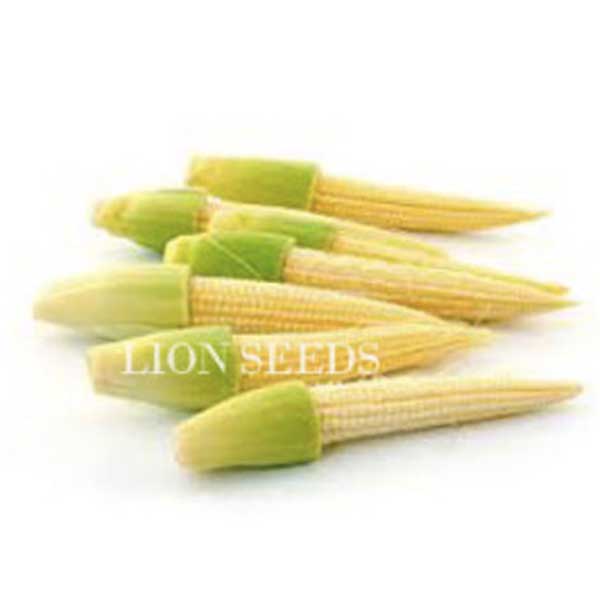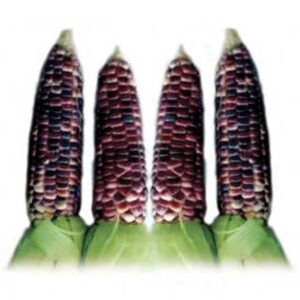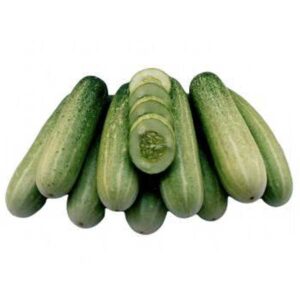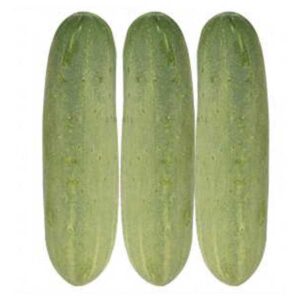Product Categories
- AMARANTH
- ASPARAGUS
- BITTER GOURD
- BOTTLE GOURD
- BROCCOLI
- BUSH BEAN
- BUTTERFLY PEA
- CABBAGE
- CARROT
- CAULIFLOWER
- CELERY
- CHINESE CABBAGE
- CHINESE KALE
- CHINESE MUSTARD
- CHINESE RADISH
- CHINESE RAPE
- CHUN CAI
- CORIANDER
- CORN
- CUCUMBER
- Dill
- EGGPLANT
- GARLAND CHRYSANTHEMUM
- GOURD
- GRASS
- GROWER'S GUIDE
- KALE
- KOHL RABI
- LETTUCE
- MARIGOLD
- MELON
- New Products
- OKRA
- PAPAYA
- PEAS
- PEPPER
- POLE BEAN
- PUMPKIN
- RAPE
- RIDGE GOURD
- SNAKE GOURD
- SOUTH AMERICA
- SPINACH
- SPONGE GOURD
- SPROUTING RADISH
- SQUASH
- THAI HERBS
- THAI MELON
- TOMATO
- TURNIP
- WATER CONVOLVULUS
- WATERMELON
- WAX GOURD
- YAM BEAN
- YARD LONG BEAN
Product Tags
Corn Baby
Yield with husk 10,100 kg/ha
Yield without husk 2,000kg/ha
Plant height 210 cm
Ear height 140 cm
Ear/plant 2-3
Ear color Yellow
Silk length 8-10 cm
Days to Detassel 45-47 days
Days of Harvest 5-7 days
Good resistant to DM
Excellent root and stalk system
RelatedProducts
Bitter Gourd BG4718
Weight: 200-240 g
Size: 5-5.5 x 22-24 cm
Shape: long
Fruit: high yield, attractive fruit
Maturity: 50-55 days from sowing
Remarks: bitter gourd, indian type
Corn Glutinous Purple
This glutinous corn has small ears and dense kernels.
The taste is little sweet and very tender. Maturity is in 60-65 days after sowing.
CORN FACTS: Corn is used as livestock feed, as human food, and as raw material in industry. Although it is a major food in many parts of the world, it is inferior to other cereals in nutritional value. Its protein is of poor quality, and it is deficient in niacin. Diets in which it predominates often result in pellagra (niacin-deficiency disease). Its gluten (elastic protein) is of comparatively poor quality, and it is not used to produce leavened bread.
It is widely used, however, in Latin-American cuisine to make masa, a kind of dough usedin such staple foods as tortillas, the round, thin cakes used as bread. In the United States, corn is boiled or roasted on the cob, creamed, converted into hominy (hulled kernels) or meal, and cooked in corn puddings, mush, polenta, griddle cakes, corn bread, and scrapple. It is also used for popcorn, confections, and various manufactured cereal preparations.
Corn F1 MAIZE 009
Average yield (grain) 9,750-12,812.5 Kg./ha
Ear height 103 cm.
Plant height 208 cm.
Days to anthesis 56 days
Days to silking 56 days
Days to harvest 110-120 days
Grain type Semi Flint
Grain color Orange – Yellow
Rows of grain 16
Shelling percentage 83%
Husk cover Completely
Ear type Cylindrical
Root and stalk system Very strong
Resistance to foliar diseases Good
Resistance to rust disease Good
Remarks: corn , maize 009
Cucumber CU 4306
F1 Hybrid CU4306
Fruit: whitish-green color skin, cylindrical shape
Size: 4.5cm x 17-18 cm, 220-240 g
Maturity: 38-40 days from sowing
Remarks: Vigorous vines and predominated female flowers, very high yield
CUCUMBER FACTS: The food value of the cucumber is low, but its delicate flavour makes it popular for salads and relishes. Fresh cucumbers should be firm, well-shaped, and bright green in colour. They may be kept in refrigerated storage for about two weeks.
Cucumber CU 4312
F1 Hybrid CU4312
Fruit: green and white color, cylindrical straight
Size: 3-3.5cm x 10-12cm, 50-100g
Maturity: 36-38 days from sowing
Remarks: vigorous growth, very attractive and uniform shape
Bitter Gourd BG4718
Weight: 200-240 g
Size: 5-5.5 x 22-24 cm
Shape: long
Fruit: high yield, attractive fruit
Maturity: 50-55 days from sowing
Remarks: bitter gourd, indian type
Corn Glutinous Purple
This glutinous corn has small ears and dense kernels.
The taste is little sweet and very tender. Maturity is in 60-65 days after sowing.
CORN FACTS: Corn is used as livestock feed, as human food, and as raw material in industry. Although it is a major food in many parts of the world, it is inferior to other cereals in nutritional value. Its protein is of poor quality, and it is deficient in niacin. Diets in which it predominates often result in pellagra (niacin-deficiency disease). Its gluten (elastic protein) is of comparatively poor quality, and it is not used to produce leavened bread.
It is widely used, however, in Latin-American cuisine to make masa, a kind of dough usedin such staple foods as tortillas, the round, thin cakes used as bread. In the United States, corn is boiled or roasted on the cob, creamed, converted into hominy (hulled kernels) or meal, and cooked in corn puddings, mush, polenta, griddle cakes, corn bread, and scrapple. It is also used for popcorn, confections, and various manufactured cereal preparations.
Corn F1 MAIZE 009
Average yield (grain) 9,750-12,812.5 Kg./ha
Ear height 103 cm.
Plant height 208 cm.
Days to anthesis 56 days
Days to silking 56 days
Days to harvest 110-120 days
Grain type Semi Flint
Grain color Orange – Yellow
Rows of grain 16
Shelling percentage 83%
Husk cover Completely
Ear type Cylindrical
Root and stalk system Very strong
Resistance to foliar diseases Good
Resistance to rust disease Good
Remarks: corn , maize 009
Cucumber CU 4306
F1 Hybrid CU4306
Fruit: whitish-green color skin, cylindrical shape
Size: 4.5cm x 17-18 cm, 220-240 g
Maturity: 38-40 days from sowing
Remarks: Vigorous vines and predominated female flowers, very high yield
CUCUMBER FACTS: The food value of the cucumber is low, but its delicate flavour makes it popular for salads and relishes. Fresh cucumbers should be firm, well-shaped, and bright green in colour. They may be kept in refrigerated storage for about two weeks.
Cucumber CU 4312
F1 Hybrid CU4312
Fruit: green and white color, cylindrical straight
Size: 3-3.5cm x 10-12cm, 50-100g
Maturity: 36-38 days from sowing
Remarks: vigorous growth, very attractive and uniform shape
Bitter Gourd BG4718
Weight: 200-240 g
Size: 5-5.5 x 22-24 cm
Shape: long
Fruit: high yield, attractive fruit
Maturity: 50-55 days from sowing
Remarks: bitter gourd, indian type
Corn Glutinous Purple
This glutinous corn has small ears and dense kernels.
The taste is little sweet and very tender. Maturity is in 60-65 days after sowing.
CORN FACTS: Corn is used as livestock feed, as human food, and as raw material in industry. Although it is a major food in many parts of the world, it is inferior to other cereals in nutritional value. Its protein is of poor quality, and it is deficient in niacin. Diets in which it predominates often result in pellagra (niacin-deficiency disease). Its gluten (elastic protein) is of comparatively poor quality, and it is not used to produce leavened bread.
It is widely used, however, in Latin-American cuisine to make masa, a kind of dough usedin such staple foods as tortillas, the round, thin cakes used as bread. In the United States, corn is boiled or roasted on the cob, creamed, converted into hominy (hulled kernels) or meal, and cooked in corn puddings, mush, polenta, griddle cakes, corn bread, and scrapple. It is also used for popcorn, confections, and various manufactured cereal preparations.
Corn F1 MAIZE 009
Average yield (grain) 9,750-12,812.5 Kg./ha
Ear height 103 cm.
Plant height 208 cm.
Days to anthesis 56 days
Days to silking 56 days
Days to harvest 110-120 days
Grain type Semi Flint
Grain color Orange – Yellow
Rows of grain 16
Shelling percentage 83%
Husk cover Completely
Ear type Cylindrical
Root and stalk system Very strong
Resistance to foliar diseases Good
Resistance to rust disease Good
Remarks: corn , maize 009










Reviews
There are no reviews yet.